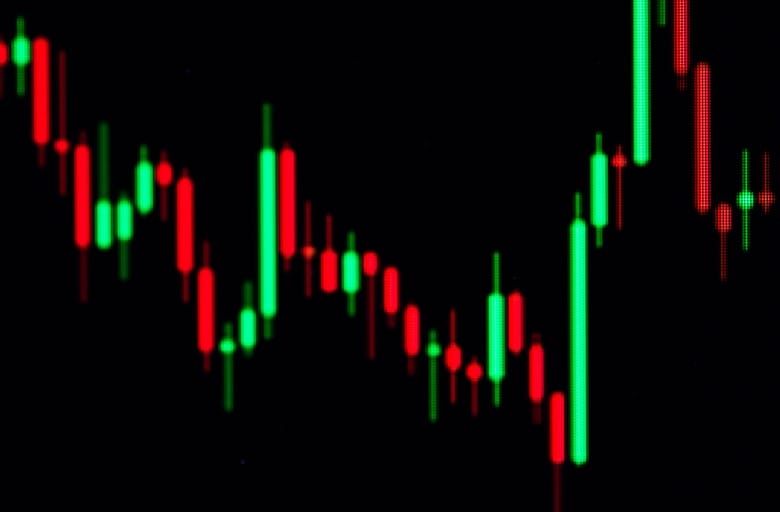The world of forex trading is dynamic and fast-paced, requiring traders to stay ahead of the curve to maximize profits. Real-time insights, especially through live forex trading signals, have become invaluable tools for traders seeking to gain a competitive edge in the market. In this comprehensive guide, we will explore the significance of real-time insights in forex trading and how live signals can substantially enhance profitability.
The Importance of Real-Time Insights:

A. Market Efficiency:
- Efficient Market Hypothesis (EMH):
- Definition: EMH suggests that asset prices reflect all available information. In an efficient market, it is challenging to achieve consistently higher-than-average returns based on historical information.
- Adaptation to New Information: Real-time insights challenge the notion of complete efficiency, as markets continuously adapt to new information. Traders who can process and act upon information swiftly may gain a competitive edge.
- Adaptive Nature of Forex Markets:
- Continuous Changes: Forex markets are influenced by a myriad of factors, including economic releases, geopolitical events, and shifts in sentiment. Real-time insights enable traders to adapt quickly to changing market conditions.
- Dynamic Nature: The dynamic nature of forex requires traders to stay informed about global developments that can impact currency values.
B. Timely Decision-Making:

- Impact of Delayed Information:
- Missed Opportunities: In a fast-paced market, delayed information can result in missed trading opportunities. Prices can change rapidly, and delayed decisions may lead to less favorable entry or exit points.
- Risk of Slippage: Slippage, the difference between the expected price and the executed price, can occur when markets move quickly. Real-time insights help mitigate the risk of slippage.
- Opportunities in Market Movements:
- Intraday Trading Opportunities: Real-time insights are particularly crucial for intraday traders seeking to capitalize on short-term price movements. Quick reactions to news or technical signals can be decisive for success.
- Swing Trading and Long-Term Investing: Even for swing traders and long-term investors, timely information is essential for adjusting strategies based on evolving market conditions.
C. Risk Management:

- Mitigating Risks in Forex Trading:
- Volatility Management: Forex markets can be volatile, and sudden price fluctuations pose risks. Real-time insights aid in monitoring volatility and adjusting risk management strategies accordingly.
- Stop-Loss and Take-Profit Adjustments: Traders use real-time information to adjust stop-loss and take-profit levels based on changing market dynamics, ensuring effective risk mitigation.
- Role of Real-Time Insights in Risk Management:
- Identification of Emerging Risks: Real-time data helps in identifying emerging risks and potential market-moving events. This foresight allows traders to implement risk mitigation measures proactively.
- Adaptive Position Sizing: Real-time insights enable traders to adapt their position sizes based on current market conditions, helping to manage overall portfolio risk.
Live Forex Trading Signals:
A. Definition and Types of Signals:

- What are Forex Trading Signals?
- Definition: Forex trading signals are alerts or recommendations that indicate potential trade opportunities in the forex market. These signals are generated through thorough market analysis, employing various tools and methodologies.
- Communication Channels: Signals are typically communicated to traders through different channels, such as email, SMS, mobile apps, or directly within trading platforms.
- Types of Signals (Technical, Fundamental, Sentiment):
- Technical Signals: Based on technical analysis, these signals utilize chart patterns, indicators, and oscillators to identify potential entry and exit points.
- Fundamental Signals: Driven by economic events and news releases, fundamental signals consider factors like interest rates, economic indicators, and geopolitical events.
- Sentiment Signals: Reflecting the mood of the market participants, sentiment signals gauge whether traders are bullish or bearish on a particular currency pair.
B. Signal Providers:

- Professional Analysts:
- Expertise and Experience: Signal providers may consist of professional analysts with expertise in technical and fundamental analysis. Their experience allows them to identify potential trading opportunities based on market trends and economic developments.
- Market Insights: Professional analysts often provide valuable insights alongside signals, helping traders understand the rationale behind specific trade recommendations.
- Algorithmic Trading Systems:
- Automated Strategies: Algorithmic or automated trading systems use computer algorithms to analyze market data and execute trades automatically. These systems are designed to identify and capitalize on trading opportunities without human intervention.
- Backtesting and Optimization: Developers use historical data to backtest and optimize algorithms, aiming to enhance performance and adaptability to changing market conditions.
- Community-Based Signals:
- Social Trading Platforms: Community-based signals often exist on social trading platforms where traders can follow and copy the trades of experienced investors.
- Crowdsourced Insights: Traders can benefit from the collective wisdom of the community, gaining insights into market sentiment and potential trading opportunities.
C. Benefits of Live Forex Signals:

- Quick Reaction to Market Changes:
- Timely Alerts: Live signals provide timely alerts, enabling traders to react quickly to market changes. This is crucial in a dynamic environment where prices can move rapidly.
- Access to Expert Analysis:
- Guidance from Professionals: Signals from professional analysts come with the added benefit of expert analysis. Traders can leverage the knowledge of experienced professionals to make informed decisions.
- Automation and Efficiency:
- Reduced Manual Analysis: Automated signals from algorithmic trading systems reduce the need for extensive manual analysis. This can save time and streamline the decision-making process.
- 24/7 Monitoring: Automated systems can operate continuously, monitoring markets 24/7 and alerting traders to opportunities even when they are not actively watching the markets.
Technical Analysis in Real-Time:
A. Candlestick Patterns:

- Identification and Interpretation:
- Candlestick Basics: Candlestick patterns represent price movements during a specific time period. Traders analyze these patterns to gauge market sentiment.
- Common Patterns: Patterns such as doji, hammer, shooting star, and engulfing patterns provide insights into potential trend reversals or continuations.
- Pattern Confirmation: Confirmation through consecutive candlesticks is crucial to validate the significance of a pattern.
- Real-Time Application in Trading:
- Intraday Decision-Making: Traders use real-time candlestick patterns for intraday decision-making. For example, a bullish engulfing pattern on a 15-minute chart might signal a potential upward movement.
- Combining with Other Indicators: Candlestick patterns are often used in conjunction with other technical indicators to strengthen trading signals. For instance, combining a reversal candlestick pattern with oversold conditions on the Relative Strength Index (RSI) can enhance confidence in a reversal signal.
B. Indicators and Oscillators:

- Moving Averages, RSI, MACD:
- Moving Averages: Traders use moving averages to smooth price data and identify trends. Crossovers of short-term and long-term moving averages can signal trend changes.
- Relative Strength Index (RSI): RSI measures the magnitude of recent price changes, indicating overbought or oversold conditions. Traders use RSI to anticipate potential reversals.
- Moving Average Convergence Divergence (MACD): MACD combines moving averages to identify trend changes and generate buy or sell signals.
- Using Indicators for Entry and Exit Points:
- Entry Signals: Indicators generate entry signals when certain conditions are met, such as a moving average crossover or RSI reaching extreme levels.
- Exit Strategies: Traders use indicators to determine exit points, such as when an RSI moves out of overbought territory or when a MACD signal line crosses the histogram.
C. Chart Patterns:

- Head and Shoulders, Double Tops and Bottoms:
- Head and Shoulders: A reversal pattern signaling a potential trend change. It consists of three peaks – a higher peak (head) between two lower peaks (shoulders).
- Double Tops and Bottoms: These patterns indicate potential trend reversals. A double top forms after an uptrend, suggesting a reversal to a downtrend, while a double bottom forms after a downtrend, signaling a potential uptrend.
- Triangle Patterns and their Significance:
- Symmetrical, Ascending, and Descending Triangles: Triangle patterns indicate consolidation before a potential breakout. A symmetrical triangle suggests indecision, while ascending and descending triangles indicate potential bullish or bearish bias, respectively.
- Breakout Confirmation: Traders wait for price to break above or below the triangle pattern for confirmation, using this information for entry or exit decisions.
Fundamental Analysis in Real-Time:
A. Economic Indicators:

- GDP, Inflation, Employment Data:
- Gross Domestic Product (GDP): GDP measures the economic output of a country. Traders monitor GDP growth rates to assess the health of an economy. Higher GDP growth often correlates with a stronger currency.
- Inflation Rates: Central banks aim to maintain stable inflation. Traders scrutinize inflation data as higher inflation may lead to interest rate hikes, impacting currency values.
- Employment Data: Employment figures, including non-farm payrolls, influence market sentiment. Rising employment is viewed positively, indicating economic strength.
- Impact on Forex Markets in Real-Time:
- Immediate Market Reactions: Major economic indicators are released periodically, causing immediate market reactions. Traders must interpret and act on these releases swiftly.
- Comparing Expectations: Market expectations play a crucial role. Deviations from expected values can lead to significant price movements. Traders use economic calendars to track upcoming releases and consensus forecasts.
B. Central Bank Announcements:

- Interest Rate Decisions:
- Key Monetary Policy Tool: Central banks use interest rates to control inflation and stimulate or cool down economic activity. Changes in interest rates directly impact currency values.
- Forward Guidance: Central banks often provide forward guidance during rate decisions, signaling their future policy intentions.
- Press Conferences and Market Reaction:
- Communication Matters: Central bank press conferences are closely watched by traders. The tone and communication of central bankers can impact market sentiment.
- Immediate and Prolonged Effects: Markets react immediately to rate decisions, and the impact may persist over the medium to long term. Traders must be prepared for sudden price shifts.
C. Geopolitical Events:

- Elections, Trade Agreements, and Conflicts:
- Political Stability: Elections and political events influence currency values. Stable political environments are generally favorable for a currency.
- Trade Agreements: Trade deals and disputes impact economic relations between countries, affecting currency pairs involved.
- Geopolitical Conflicts: Political unrest or conflicts can lead to market uncertainty. Traders monitor geopolitical events for potential volatility.
- Navigating Political Uncertainty in Real-Time:
- Adaptability: Traders need to adapt quickly to unfolding geopolitical events. Real-time news and analysis help assess the potential impact on currencies.
- Safe-Haven Assets: During times of uncertainty, certain currencies (like the US Dollar and Swiss Franc) and commodities (like gold) may act as safe-haven assets.
Combining Technical and Fundamental Analysis:
A. Synergies and Conflicts:

- Balancing Technical and Fundamental Signals:
- Complementary Analysis: Technical and fundamental analyses provide different perspectives on market conditions. Traders often combine them to gain a more comprehensive understanding.
- Confirmation and Divergence: Technical signals may align with or contradict fundamental trends. Confirmation between the two can strengthen a trade signal, while divergence may signal caution.
- Case Studies of Successful Integration:
- Example 1 – Trend Confirmation: Fundamental data suggests a strengthening economy, supporting a bullish outlook. Technical analysis confirms an uptrend with bullish chart patterns, providing a strong buy signal.
- Example 2 – Contrarian Approach: Fundamental data indicates economic weakness, but technical analysis identifies oversold conditions and bullish reversal patterns, suggesting a potential buying opportunity.
B. Adaptive Strategies:

- Adjusting Strategies Based on Real-Time Insights:
- Dynamic Market Conditions: Forex markets are dynamic, and conditions can change rapidly. Traders must adapt their strategies based on the latest technical and fundamental information.
- News Trading: Incorporating news releases into technical analysis allows traders to capitalize on immediate market reactions to fundamental events.
- Flexibility in Trading Approaches:
- Long-Term vs. Short-Term Trading: Fundamental analysis may guide long-term investment decisions, while technical analysis can be employed for short-term trading strategies.
- Position Sizing and Risk Management: Combining analyses helps traders adjust position sizes based on both short-term technical signals and long-term fundamental trends.
Challenges and Risks:
A. Signal Reliability:

- Evaluating Signal Providers:
- Consistency and Accuracy: Traders relying on signal providers need to assess their historical performance for consistency and accuracy.
- Transparency: Transparent communication from signal providers regarding their methodology and risk management strategies is essential.
- Dealing with False Signals:
- False Positives and Negatives: No analysis is foolproof. Traders must be prepared for false signals and employ risk management strategies to minimize potential losses.
- Continuous Evaluation: Regularly reviewing the effectiveness of combined analyses helps traders refine their approach and mitigate risks associated with false signals.
B. Market Volatility:

- Handling Unexpected Market Swings:
- Dynamic Nature of Forex: Forex markets are susceptible to sudden and unexpected swings. Traders must be prepared for volatile conditions.
- Protective Measures: Employing protective measures such as stop-loss orders and dynamic risk management helps mitigate the impact of market volatility.
- Risk Mitigation Strategies:
- Diversification: Diversifying trading strategies and currency pairs can spread risk and reduce the impact of unexpected market movements.
- Real-Time Monitoring: Continuous monitoring of market conditions allows traders to adjust their strategies promptly in response to increased volatility.
Don’t trade all the time, trade forex only at the confirmed trade setups.
Get more confirmed trade setups here: forexgdp.com/buy/
